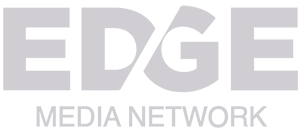
Jun 16
Effective Techniques for Measuring Brand Awareness and Gaining Valuable Insights
READ TIME: 5 MIN.
Use surveys and online polls to collect data directly from your target audience. Ask questions about brand recognition, recall, and perceptions. Tools like Google Forms or SurveyMonkey allow you to reach participants quickly and analyze results efficiently, making them key tools for measuring brand awareness.
Track brand mentions across social media platforms to gauge visibility. Use tools like Hootsuite or Brandwatch to monitor conversations surrounding your brand. Analyzing this data helps identify both positive and negative sentiments, offering a clearer picture of your brand's standing in terms of measuring brand awareness.
Incorporate website analytics to measure traffic sources and user engagement. Tools like Google Analytics can reveal where your visitors come from, how they interact with your content, and how effectively your marketing campaigns drive traffic.
Set clear benchmarks by comparing your metrics to industry standards. This practice aids in understanding how well your brand performs relative to competitors. Regularly reassess and adjust your strategies based on these insights to stay competitive.
Combine qualitative and quantitative approaches for a rounded view. While numbers provide hard data, feedback from focus groups or customer interviews offers deeper insights into consumer perceptions. This dual approach enables more informed decision-making when measuring brand awareness.
Measuring Brand Awareness
Utilize surveys to gauge brand recognition. Craft questions that assess how familiar consumers are with your brand compared to competitors. Include metrics like aided and unaided awareness for richer insights.
Analyze social media engagement. Track mentions, shares, and comments to understand your brand's visibility and sentiment. Tools like Google Analytics can provide data on traffic sources and user behavior related to your brand.
Monitor search volume for branded keywords. Utilize tools such as Google Trends or SEMrush to assess how often your brand name appears in search queries. An increase in search volume typically indicates rising brand awareness.
Conduct focus groups to collect qualitative data. Gather feedback directly from consumers about their perceptions and experiences. This direct engagement can provide deeper insights into brand positioning and recognition.
Assess website traffic. A notable increase in visitors often reflects heightened awareness. Examine referral sources to identify which channels are driving traffic to your site.
Implement brand tracking studies. Regularly measure key metrics over time to observe trends in awareness levels. This ongoing analysis allows for adjustments in marketing strategies.
Compare your brand's performance against competitors. Conduct market share analysis to see where you stand. A growing market share often correlates with improved brand awareness.
Utilize customer feedback and reviews. Analyze sentiment in reviews to gauge how well your brand resonates with consumers and identify areas for improvement.
Evaluate influencer partnerships. Collaborations with influencers can enhance visibility. Track engagement metrics to measure the impact of these campaigns on brand awareness.
Choosing the Right Metrics for Brand Awareness Assessment
Focus on metrics like reach, impressions, and brand recall to gauge brand awareness effectively. Reach indicates how many unique users come across your brand. Track this number across various platforms to understand your audience's exposure.
Impressions provide insight into the total exposure of your brand message. Monitor impressions during specific campaigns to evaluate their visibility. This data helps identify which channels yield the best awareness results.
Brand recall, measured through surveys or interviews, assesses whether consumers can remember your brand when prompted. This metric reveals your brand's impact and its mental availability among consumers. Aim for a high recall rate, indicating successful branding efforts.
Also consider social media mentions and engagement metrics. Track how often your brand gets talked about online. Engage with users to boost visibility and create a rapport. Analyze comments, shares, and likes to evaluate sentiment and connection with the audience.
Website traffic serves as another essential metric. Increased visits often correlate with successful branding initiatives. Use analytics tools to assess traffic sources and identify effective messaging channels.
Combine quantitative and qualitative data for a well-rounded understanding. Use insights from customer feedback alongside numerical metrics to uncover strengths and opportunities for improvement. By focusing on these specific metrics, you can accurately assess and enhance brand awareness.
Utilizing Surveys and Focus Groups to Gather Consumer Insights
Designing targeted surveys can provide quick access to consumer opinions. Focus on specific demographics and clearly define your objectives. Use both qualitative and quantitative questions to enrich your data collection.
Analyze responses for trends. Look for patterns that indicate how consumers perceive your brand. Segment data by demographics for deeper insights. For example, compare responses from age groups or geographic locations to identify nuances.
Focus groups offer a dynamic environment for discussion. Assemble a diverse group of participants aligned with your target audience to gather varied perspectives. Facilitate open conversations, allowing participants to freely express their views on your brand and competitors.
1. Start with general questions to create a comfortable atmosphere.
2. Gradually direct discussions toward specific brand attributes and experiences.
3. Record sessions (with consent) for later analysis of non-verbal cues and dynamics.
Combine survey results with focus group insights for a comprehensive view. Look for commonalities in feedback that indicate areas of strength and opportunities for improvement. Implement findings to boost brand awareness strategies effectively.
Regularly revisiting these methods ensures you stay tuned to consumer sentiments towards your brand. Remain adaptable with question formats and focus group dynamics to align with shifting consumer behaviors. This proactive approach keeps your brand relevant and recognized.
Why should you care about native ads? This article reveals why they're a game-changer in digital marketing - https://www.mgid.com/native-advertising
Analyzing Social Media Engagement as a Brand Awareness Indicator
Track engagement metrics such as likes, shares, comments, and mentions to evaluate brand awareness effectively. Regularly monitor these indicators across platforms like Facebook, Instagram, Twitter, and LinkedIn. A high number of interactions signifies a strong connection with your audience.
Investigate the sentiment behind social media comments. Positive sentiment reflects favorability towards your brand, while negative reactions can highlight areas for improvement. Utilize tools like sentiment analysis software to categorize responses and adapt your strategy accordingly.
Engagement rates divided by reach provide insight into how well your content resonates with your audience. Aim for higher engagement ratios to signal increased awareness and interest. Compare these rates over time to identify trends or shifts in audience perception.
Utilize A/B testing on your posts to find the type of content that elicits the most engagement. Experimenting with different formats, such as images, videos, or polls, can help determine what best captures attention and encourages interaction.
Identify key influencers within your niche who engage with your brand. Their advocacy can amplify visibility and reach, contributing to brand awareness. Collaborating with these individuals can further enhance recognition and credibility.
Analyze user-generated content related to your brand. This type of engagement not only boosts authenticity but also expands your reach as customers share their experiences. Encourage customers to tag your brand in their posts and create relevant hashtags for greater visibility.
Regularly review analytics to spot successful posts and campaigns. Look for patterns in high-performing content, which can inform future strategies. Align your messaging with current events, trends, or seasonal themes to keep your brand relevant and top-of-mind.
Engagement metrics provide a clear picture of how well your brand resonates in the minds of consumers. Continuously refine your social media strategy based on these findings to enhance brand awareness over time.
To wrap up, assessing brand awareness involves a blend of gathering direct feedback, tracking social media mentions, and analyzing web traffic. Platforms like Google Analytics, Hootsuite, and survey tools provide valuable insights into consumer perception and brand visibility. By leveraging services like mgid.com, brands can fine-tune their ad targeting and optimize their strategies to stay ahead of the competition.







